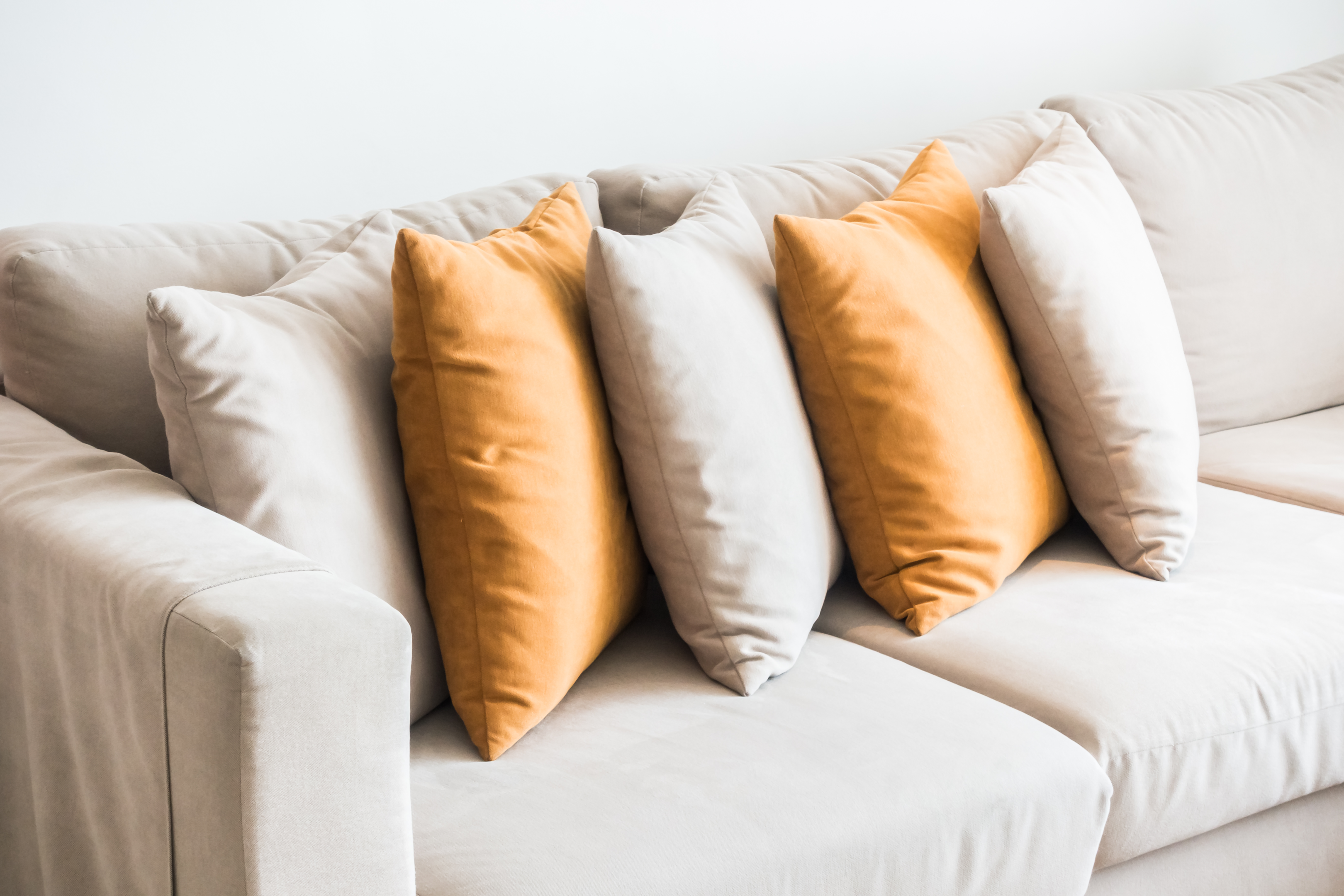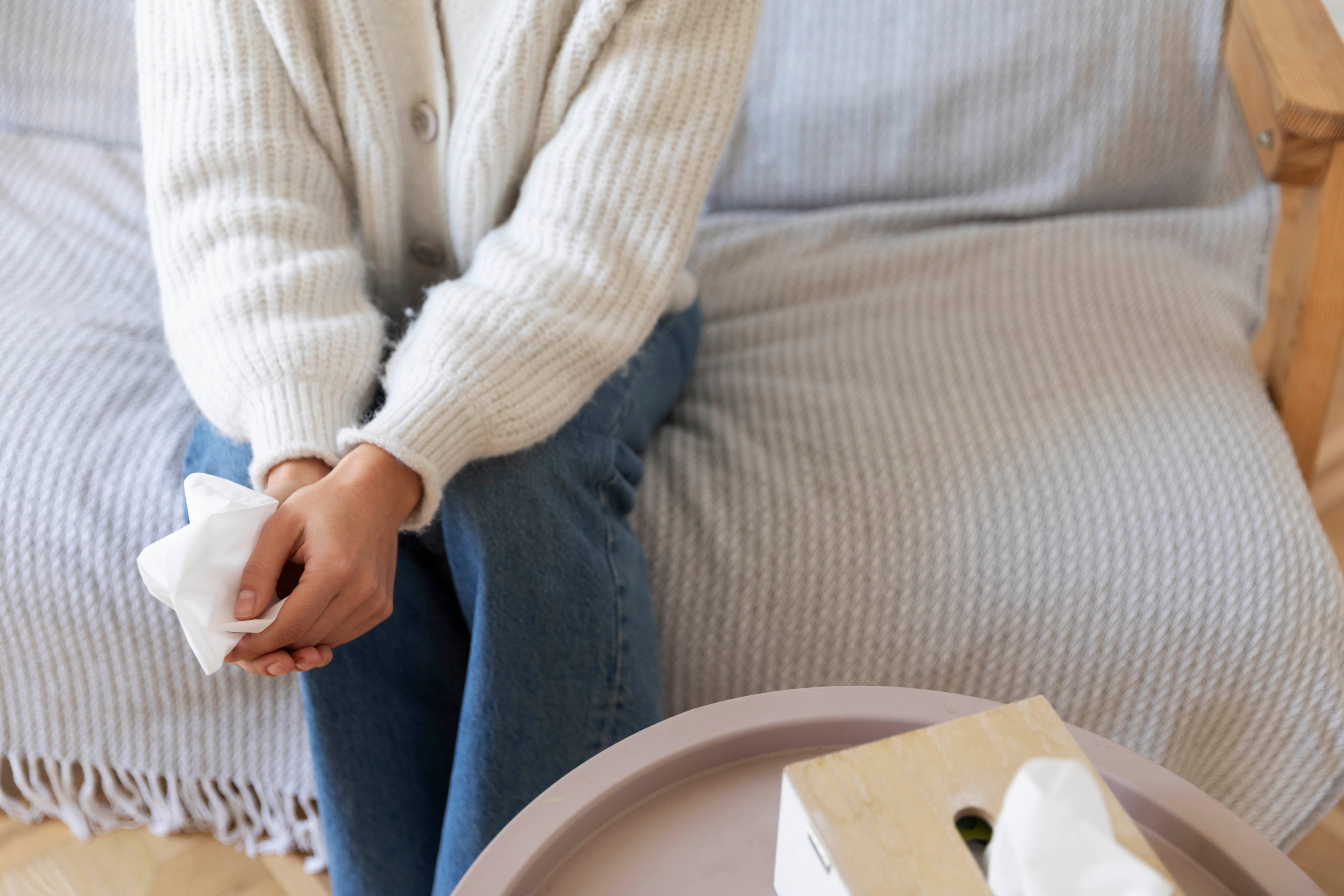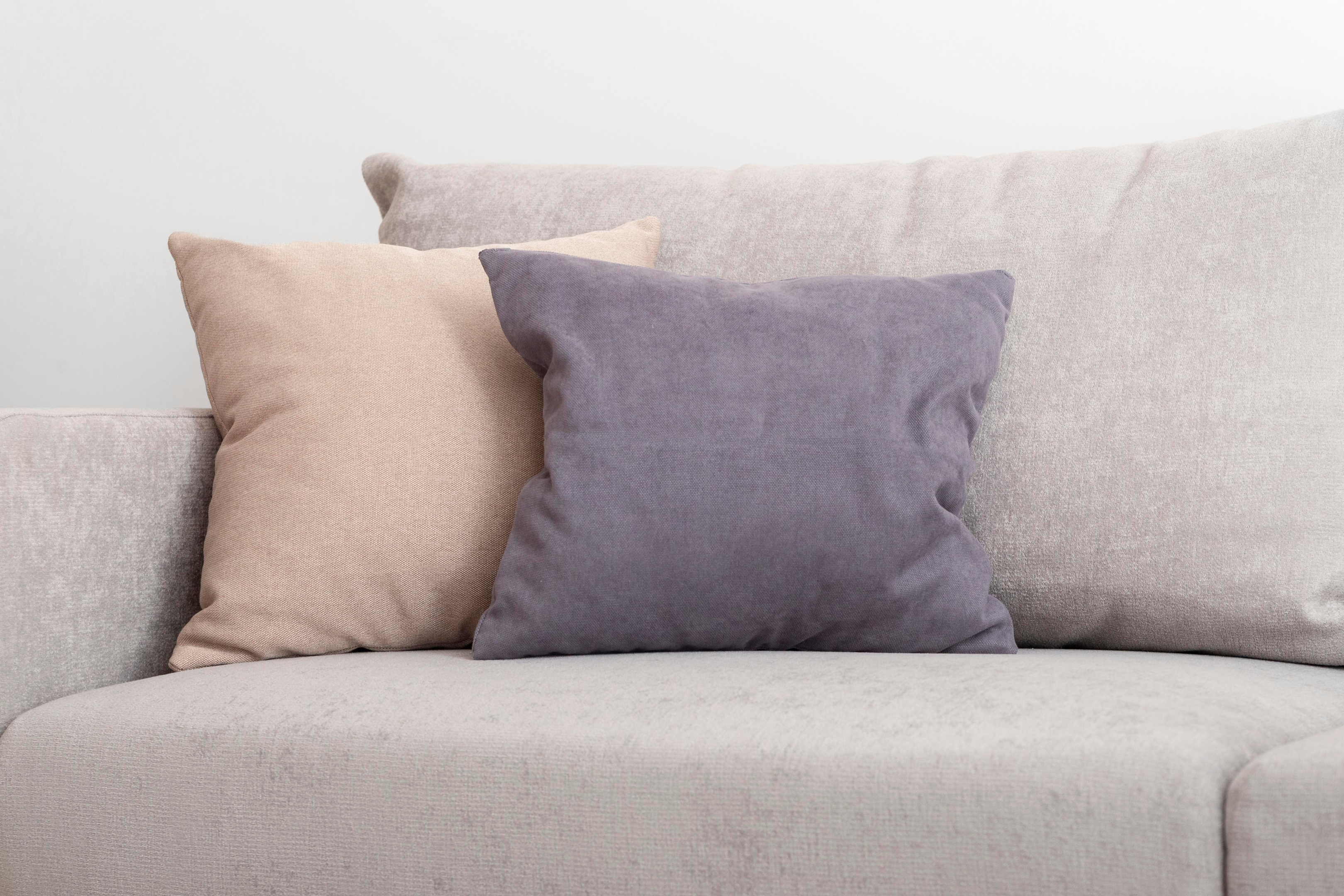How to Restuff Couch Cushions: A Quick and Easy Guide
Do you think your couch appears worn out and lackluster? It's a common problem many people face when the cushions lose their softness and begin to sag over time. But don't worry; you don't have to spend a fortune on a new couch.
We're here to help you breathe new life into your old furniture by learning how to restuff couch cushions. Restuffing couch cushions is an easy and affordable way to give your couch a makeover, not to mention the added benefits of improved comfort and support.
The process involves taking measurements, choosing suitable stuffing materials, and then carefully re-stuffing the cushions. With some patience and elbow grease, we can transform our tired sofa into a cozy, inviting piece of furniture again.
Key Takeaways
- Making a no-sew bench seat cushion is a simple and cost-effective DIY project that can be completed in just a few hours with minimal effort.
- The necessary materials for making a no-sew bench seat cushion include foam padding, batting, and a fabric of your choice, which can be assembled with spray adhesive, fabric glue, or heavy-duty tape.
- The final cushion can be attached to the bench with hook-and-loop fasteners or ties, providing a comfortable and stylish seating option without the need for any sewing skills.
Types of Couch Cushion Fillings
Regarding restuffing couch cushions, there are several filling options to consider. Each has characteristics that can affect comfort, support, and durability.
This section briefly discusses some of the most popular types of couch cushion fillings: foam, stuffing, down, poly-fil, feathers, and high-density foam.
Foam
It is a common choice for couch cushions as it provides a firm and supportive feel. Available in different densities, choosing a foam that meets your comfort preference and durability needs is essential.
High-density foam, in particular, is known for its long-lasting support, making it an excellent option for heavy-use furniture.
Stuffing
Polyester fibers are lightweight and provide a softer, more plush feel than foam. One popular stuffing material is poly-fil, a synthetic polyester fiber commonly used for pillows and stuffed toys.
The item is user-friendly and easily adjusted to reach the desired hardness level.
Down
These fillings are made from ducks' or geese's soft, fluffy undercoating, providing a luxurious and cozy feel. Couch cushions filled with down are known for being plush but may require more maintenance, such as regular fluffing, to maintain their shape over time.
Feathers
These natural filling options are often combined with down to provide structure and support without compromising comfort. While feather-filled cushions are comfortable, they can be prone to clumping and may require occasional plumping to maintain their appearance.
Combining different fillings, such as foam wrapped in batting or down, could be the perfect solution for those who want firm support and a soft, luxurious feel. This product is ideal for anyone seeking comfortable and durable stuff sofa cushions.
In conclusion, selecting the ideal filling for your couch cushions depends on your comfort, support, durability, and maintenance preferences. Consider the unique characteristics of each type of filling before making your decision, and remember that a combination of materials may offer the most satisfying result.
Gathering the Necessary Supplies
Before we dive into restuffing our couch cushions, let's gather all the materials and tools we'll need for this DIY project. We'll split this section into three sub-sections: Measuring Tools, Restuffing Materials, and Upholstery Accessories.
Measuring Tools

Accurate measurements are crucial for a successful couch cushion restuffing project. We'll need the following tools:
-
Sewing measuring tape: This flexible tape allows us to easily measure our cushions' width, depth, and height. It's available at most fabric stores and online retailers like Walmart.
-
Ruler or straight edge: This can help cut foam or fabric as needed.
Restuffing Materials
For a professional-looking result, it's essential to choose appropriate stuffing materials. There are several options, and we'll need to consider the comfort and support our couch cushions require. Some commonly used materials include:
-
Foam: High-density foam is a popular choice for a seat cushion, as it offers excellent support and durability. We can find replacement foam at most fabric or craft stores.
-
Quilt batting: This material, used in quilts, can also be wrapped around foam cushions to provide an added layer of softness. We can typically purchase quilt batting by the yard at fabric stores.
-
Polyfil: This synthetic stuffing is often used in back cushions, providing softness while maintaining shape. A popular alternative is down or feathers, but these materials can be more expensive.
-
Spray adhesive will help us secure foam pieces and batting, ensuring a smooth and professional finish. Opt for a foam-safe bond available at most craft stores.
Upholstery Accessories
Lastly, we'll need some upholstery accessories to finalize our restuffed couch cushions:
-
Seam ripper: This handy tool will help us carefully open cushion covers, allowing easy removal and replacement of stuffing materials.
-
Needle and thread: We'll need these to close our cushion covers or casing once we've restuffed them. Choose a thread color that matches our fabric cover for a seamless finish.
-
Fabric scissors: Sharp fabric scissors will make cutting foam, batting, and any additional fabric more accessible and precise.
-
Vacuum cleaner: Useful for cleaning our couch interior and removing any deteriorating foam or other debris before the new foam insert stuffing materials.
We're now well-prepared to tackle our couch cushion restuffing project and bring new life to our furniture by gathering all the necessary supplies. Always take accurate measurements, choose the appropriate restuffing materials based on our cushions' needs, and use the correct upholstery tools for a professional and satisfying result.
Restuffing Process

Preparing the Cushions
Before we start the restuffing process, preparing our couch cushions is crucial. First, let's measure the dimensions of the cushions using a sewing measuring tape or a standard measuring tape.
We need to note the width, depth, and height measurements to choose the suitable stuffing material and quantity for our DIY project. While preparing the cushions, it's also a good idea to clean them thoroughly using a vacuum cleaner to remove any dirt or debris.
Removing the Old stuffing
Once we have our measurements and materials, it's time to remove the old stuffing from the cushion covers. We can use a seam ripper or needle to carefully open the seams, ensuring we don't damage the fabric.
We can remove the old, deteriorating foam or other filling material with loose cushion covers. If your cushions have foam pieces glued together, you might need a foam adhesive remover to loosen them. Be sure to dispose of the old stuffing properly.
Adding the New Filling
Now our cushions are ready to be filled with new stuffing material. High-density foam slabs are a good choice for seat cushions, while polyfill or quilt batting can add fullness to back cushions. Depending on our measurements, we can cut the foam slabs to the appropriate size and layer the polyfill if needed.
It is where we can also adjust the firmness of our seating by adding more or less filling material. We can use specially designed foam adhesive to secure the new pieces together.
Closing the Cushion Covers
With our new filling, it's time to close the cushion covers. We can either sew the seams by hand or use a sewing machine for a neat and secure finish.
Follow the original stitch line and remove any excess fabric or thread when sewing. After closing the covers, we can place the restored cushions back onto our couch, sit back, and enjoy the comfort of our refreshed sofa.
Following these steps, we can successfully transform our worn-out couch cushions into cozy and supportive seating through a budget-friendly re-upholstering process. Have new stuff sofa cushions!
Enhancing Cushion Support

Restuffing your couch cushions can significantly improve their comfort and support. This section discusses several options for enhancing cushion support, including upholstery techniques, replacement foam options, and additional support solutions.
Upholstery Techniques
When restuffing your couch cushions, it's essential to use the proper upholstery techniques for a long-lasting and comfortable result. First, correctly measure your cushions to determine the right amount of materials needed.
Based on the measurements, you can select the appropriate stuffing material, such as high-density foam or fiberfill. To enhance support, wrap the new foam cushions with quilt batting, securing it with spray adhesive or upholstery pins. If your couch has removable covers or cushion casing, you can also take this opportunity to clean or update them as needed.
Replacement Foam Options
Selecting suitable replacement foam is crucial for achieving the desired level of comfort and support. High-density foam is a popular choice for seat cushions due to its durability and ability to maintain its shape over time.
Foam cushions come in various densities and firmness levels, so choosing the one that best suits your seating preferences and needs is essential. Additionally, consider using a foam adhesive to secure the new foam to the original cushion base, ensuring a stable and comfortable seating surface.
Additional Support Solutions
Besides replacing the foam, you can also explore other support solutions to enhance the comfort of your couch. Adding a layer of memory foam or a down-feather topper to your remaining seat cushions will provide extra cushioning and contouring support.
Another solution is to utilize lumbar pillows or backrest bolsters, which can improve your posture and alleviate lower back discomfort while sitting. Furthermore, adjustable couch legs or furniture risers help distribute the weight evenly, reducing pressure on the seat cushions and prolonging their lifespan.
By following these methods, we can effectively enhance our couch cushion support and enjoy a more comfortable and inviting seating area.
Maintaining Your Restuffed Couch Cushions

Now that we've restuffed our couch cushions, it's essential to maintain them properly. It will help keep the couch looking fresh and comfortable for longer. Here's what we can do to ensure our restuffed couch cushions remain in great shape:
Firstly, it's important to regularly fluff our couch cushions, including both seat and back cushions. Gently pat or shake the cushions to redistribute the filling and avoid clumping or sagging. Depending on usage, we recommend doing this at least once a week or more frequently.
We should also rotate the cushions regularly, especially for seat cushions. By changing their position, we can ensure even wear and tear and prevent specific areas from becoming too compressed. It is also true for our back cushions, whether detachable or reversible.
Another critical aspect of maintaining our restuffed couch cushions is keeping them clean. Vacuum the couch cushions using the upholstery attachment of our vacuum cleaner to remove dirt, dust, and any possible allergens. Doing this every couple of weeks or more often if needed is good.
For any spills or stains, attend to them immediately. To avoid spreading the paint on the cushion fabric, it's best to blot the spillage with a clean, damp cloth instead of rubbing it. Remember to check the care label or manufacturer's recommendations before using any cleaning products on the cushion fabric.
If the cushion covers are removable, wash them according to the care instructions provided. Ensure not to use harsh detergents or bleach, which can damage the fabric. In some cases, the covers may also be suitable for dry cleaning.
Finally, avoid placing the couch in a spot that receives direct sunlight or near any heat sources to prevent the fabric from fading and becoming damaged. Draw the curtains or blinds during the day to protect the couch cushions if necessary.
By following these simple steps, we can extend the life of our restuffed couch cushions and keep our sofa looking and feeling like new for a longer time!
Frequently Asked Questions
Best product for cushion restuffing?
When it comes to restuffing cushions, the best product will largely depend on your personal preferences and the type of cushion you have. However, a popular option is foam inserts, which provide support and maintain their shape over time.
Additionally, poly-fil and quilt batting are also widely used for this purpose.
Alternative stuffing materials?
If you're looking for alternative stuffing materials, consider using fiberfill, feathers, or shredded foam. Please evaluate the benefits and disadvantages of each
material and choose the one that best fits your requirements and personal preferences.
For example, feather stuffing provides a luxurious feel, while shredded foam is more affordable and eco-friendly.
Best filling for sofa back cushions?
For sofa back cushions, a popular choice is polyester fiberfill, as it offers a soft, plush feel while still providing support. You can also consider down or down-alternative materials for a more luxurious feel.
Fixing sagging couch cushion?
First, remove the cushion cover to fix sagging couch cushions and assess the condition of the existing cushion filling. If the filling is still in good shape, add more stuffing material to restore the cushion's shape and firmness. If the filling has become less supportive, replace it with fresh foam or a similar material.
Restuffing attached cushions?
Restuffing attached cushions can be more challenging, but it's still possible with the right tools and approach. First, locate and remove the screws or staples that secure the cushion to the couch frame.
Then, carefully detach the cushion and follow the same process as non-attached cushions – remove the cover, assess the filling, and replace or add more stuffing as needed. Finally, reattach the cushion to the couch frame.
Restuffing cushions without zippers?
If your cushions do not have zippers, you can still restuff them by carefully opening a seam. Carefully use a seam ripper or small scissors to open the cushion to avoid damaging the fabric.
Once you've created an opening, remove the old stuffing and replace it with your chosen material. Then, sew the seam closed using a needle, thread, or sewing machine.














